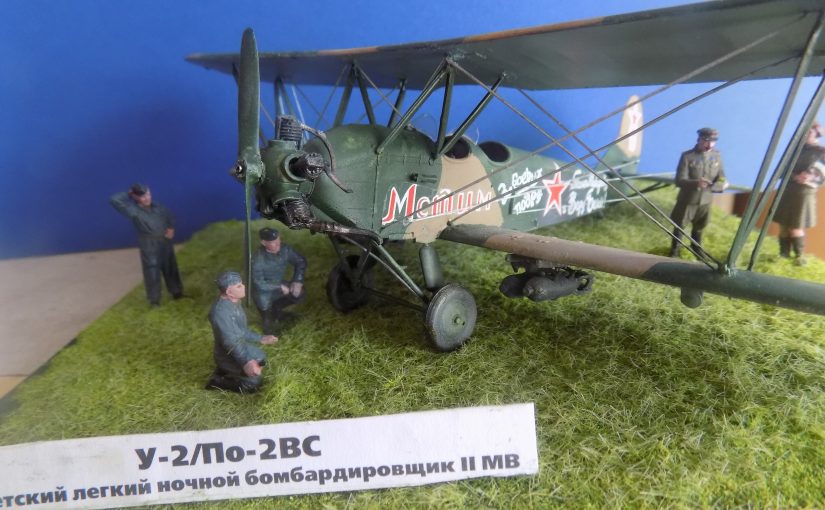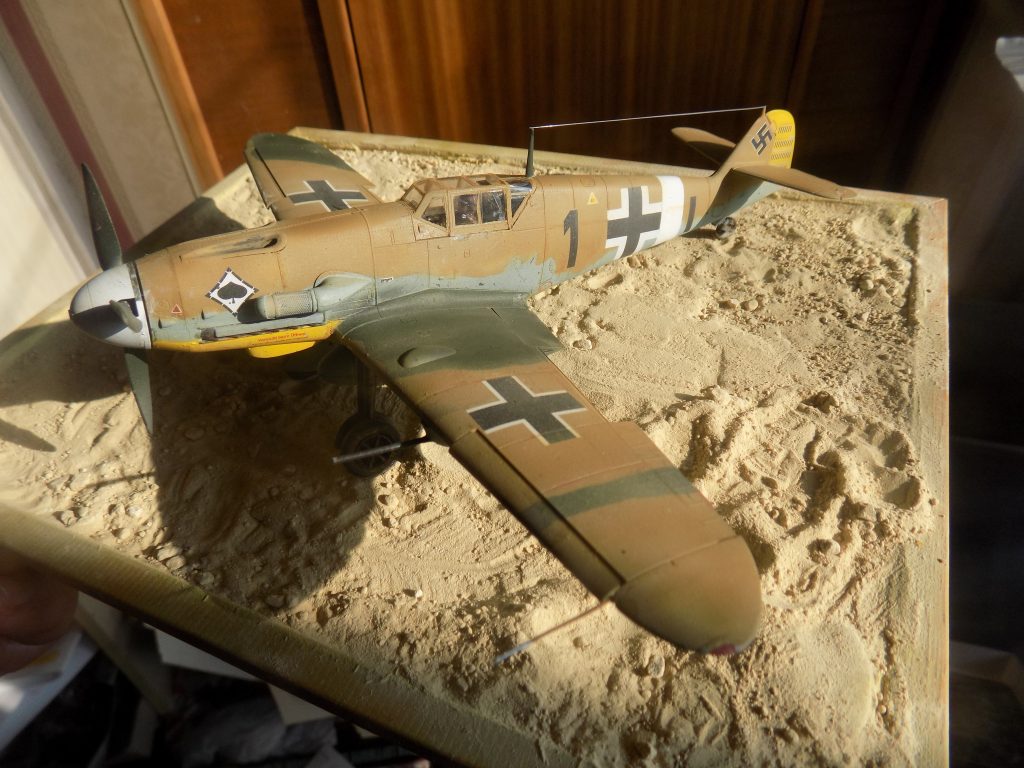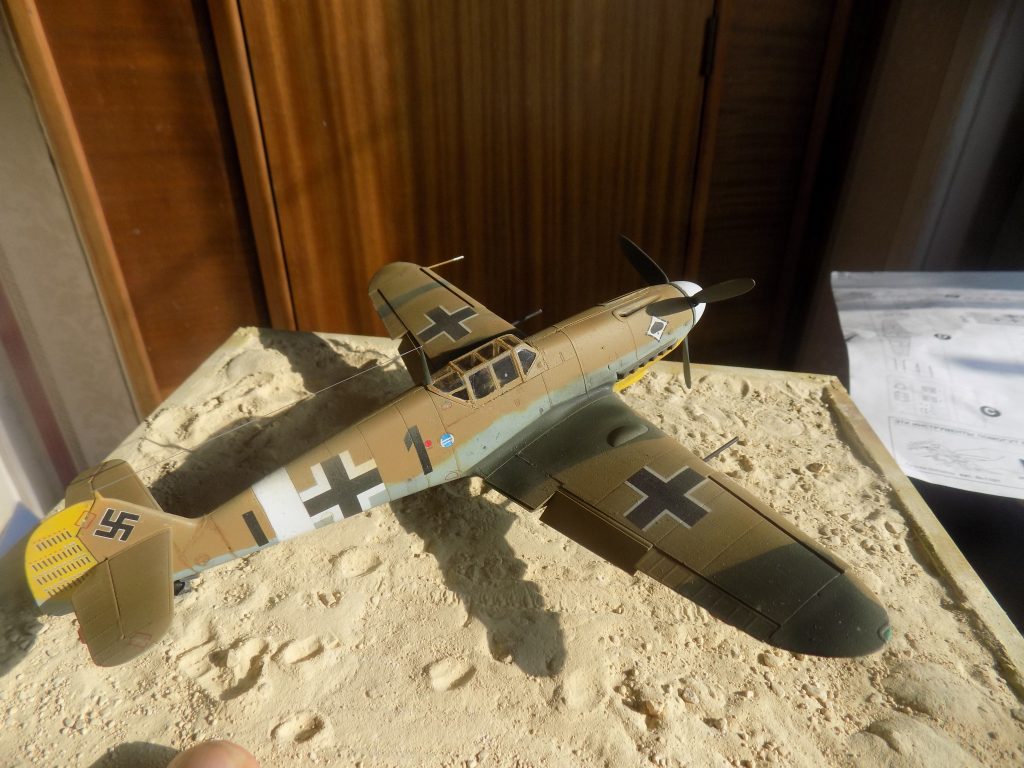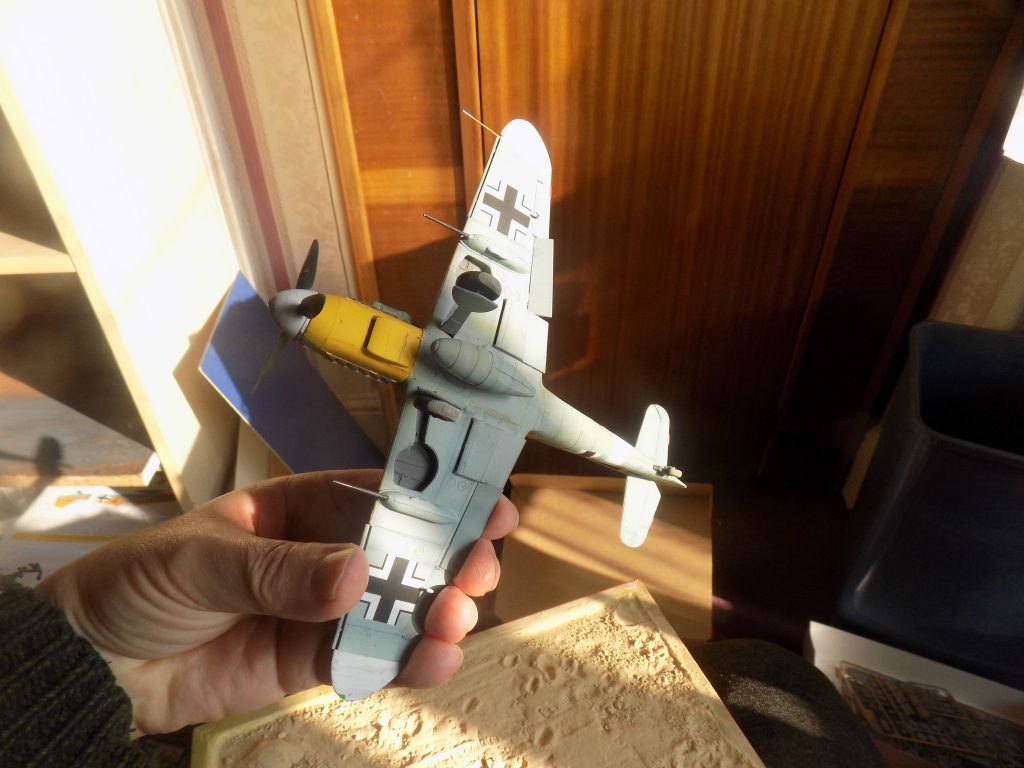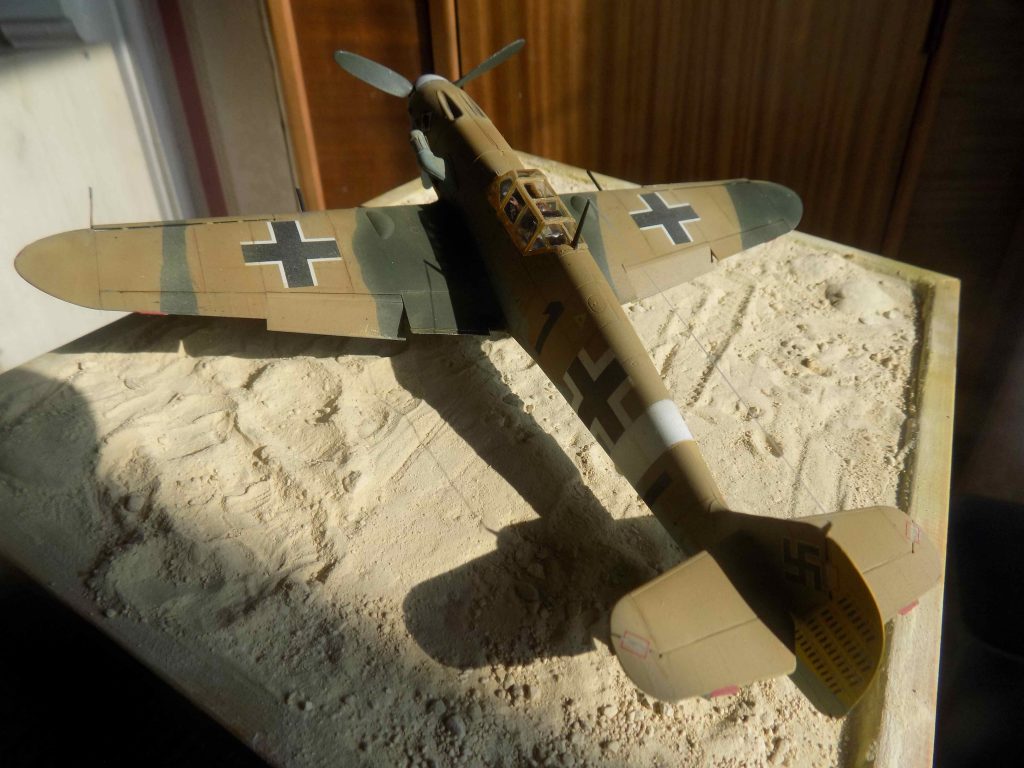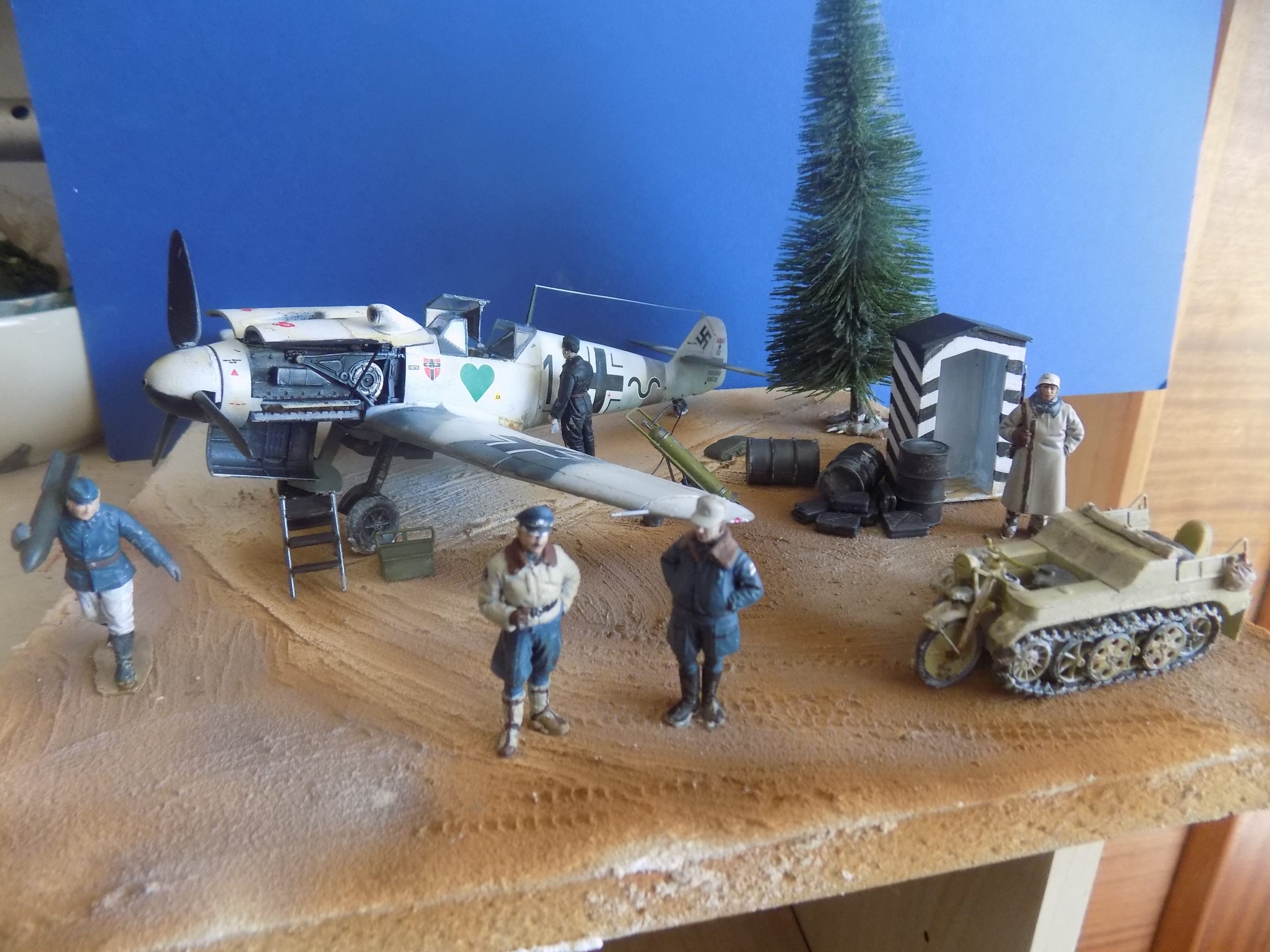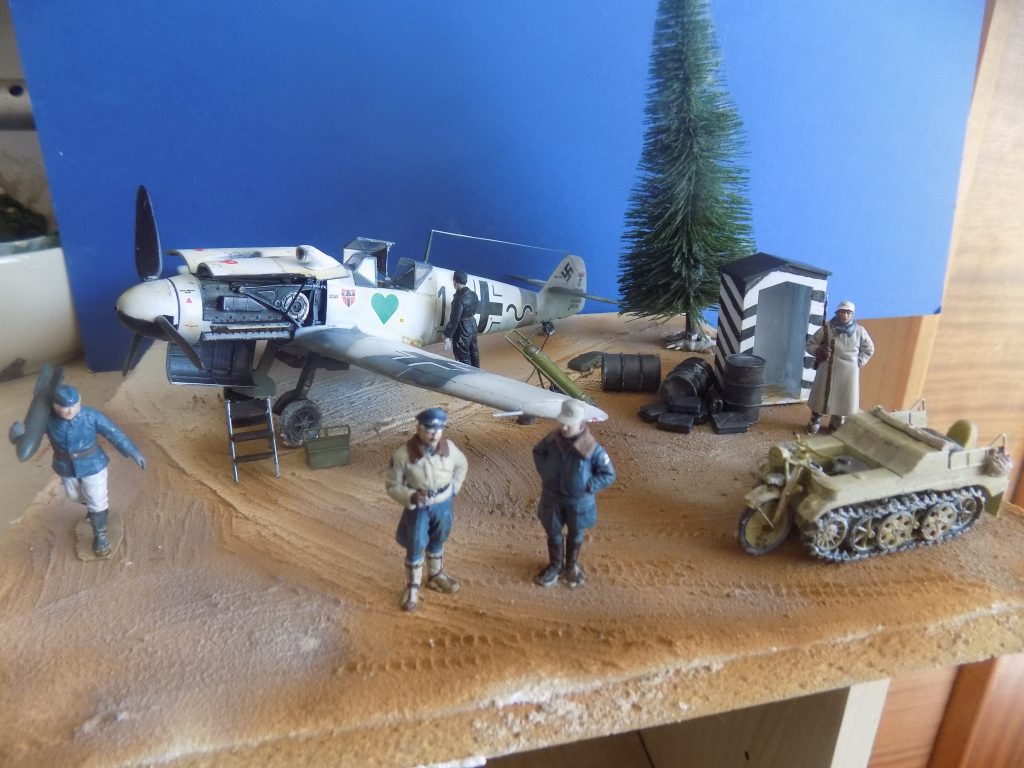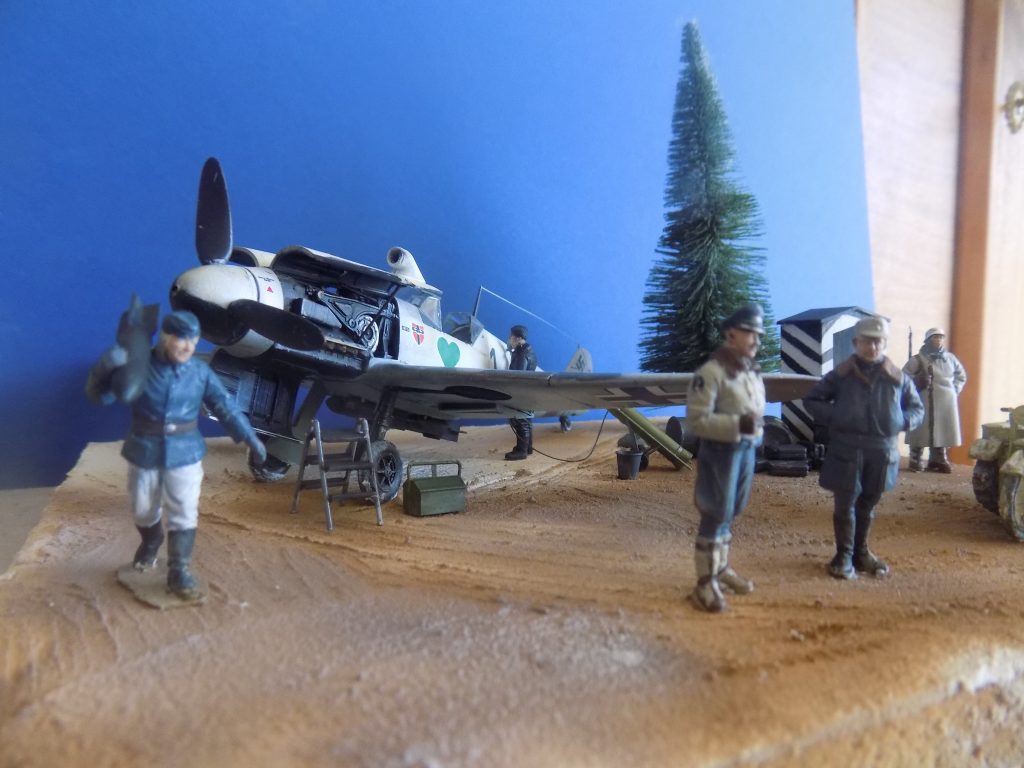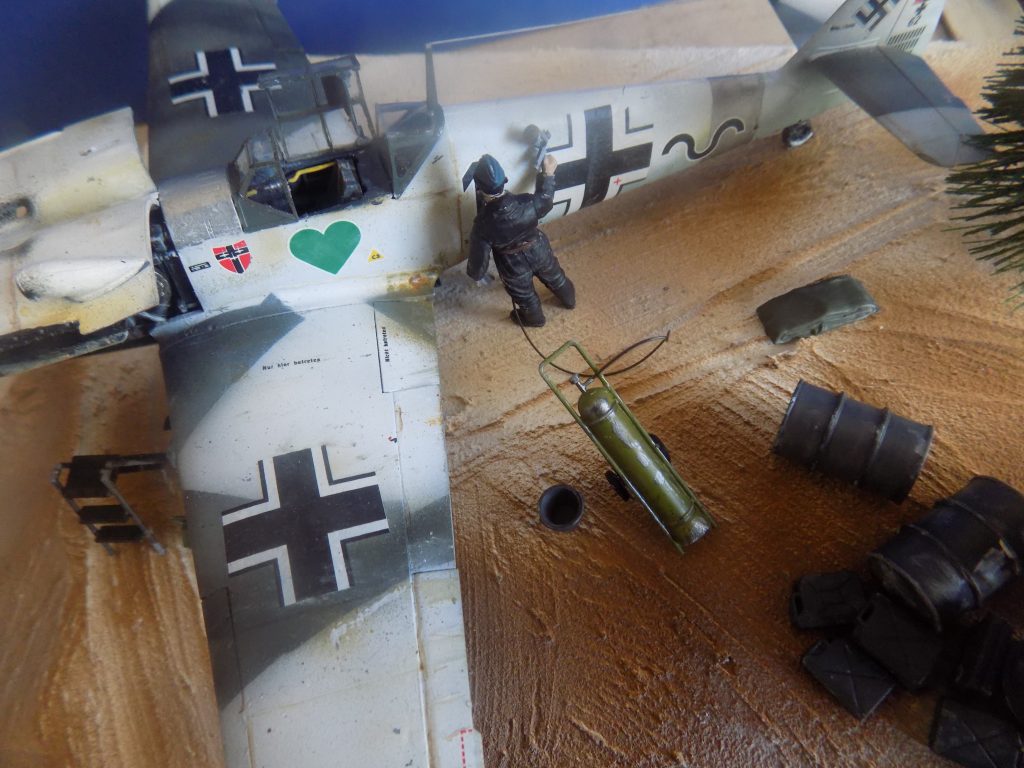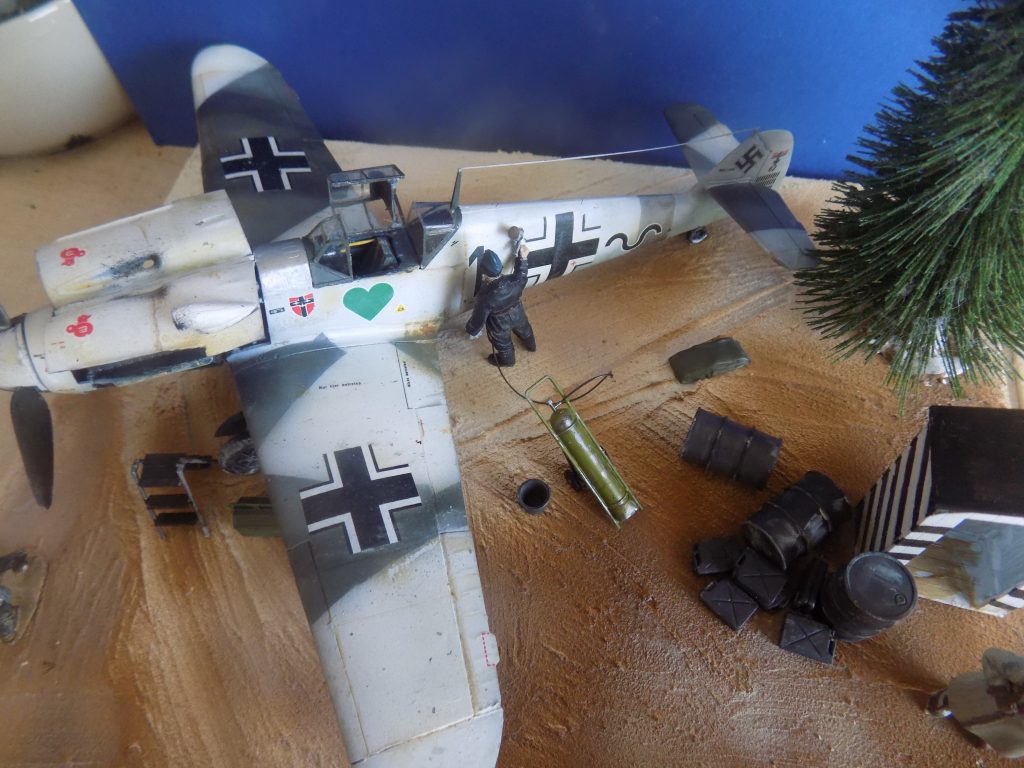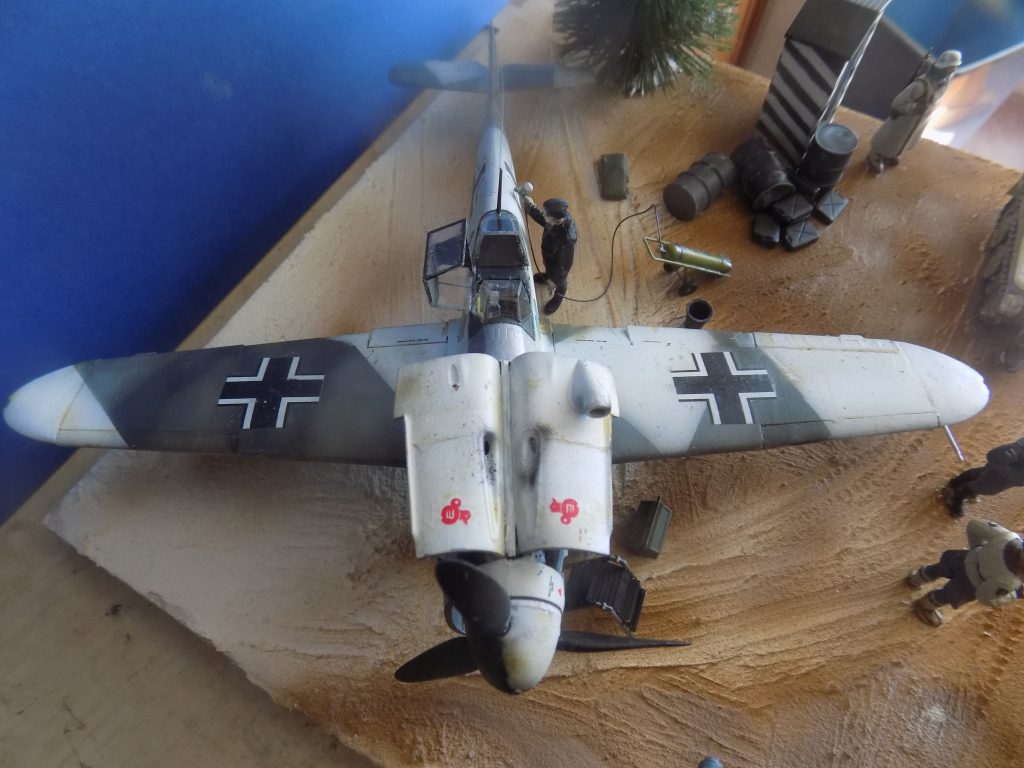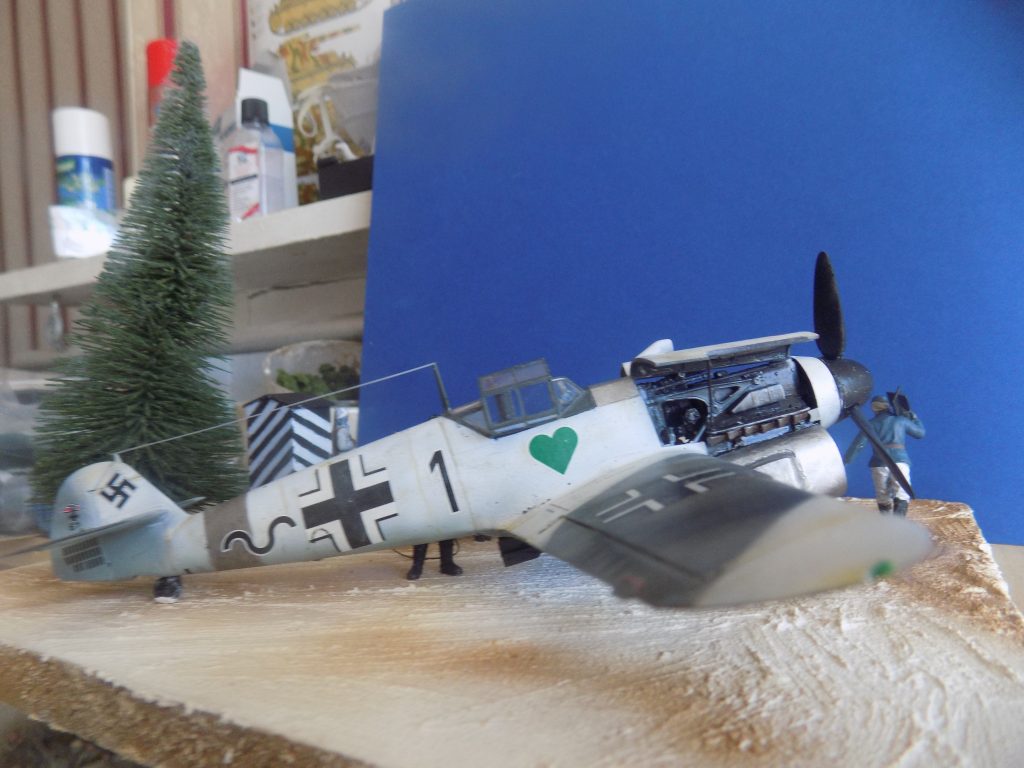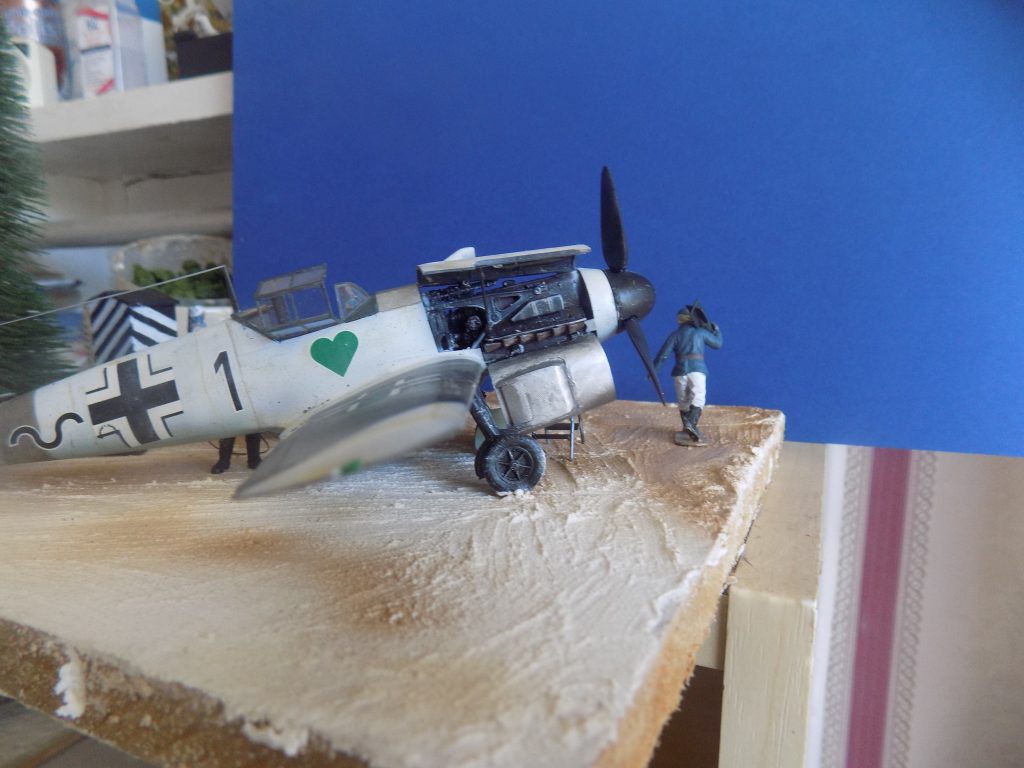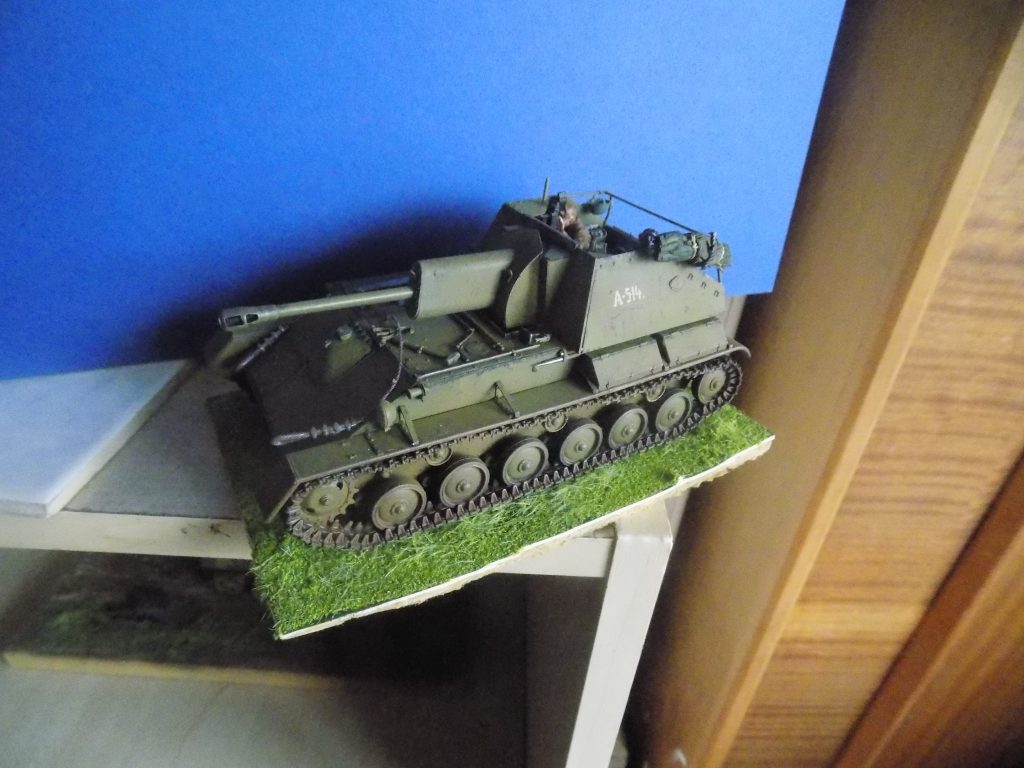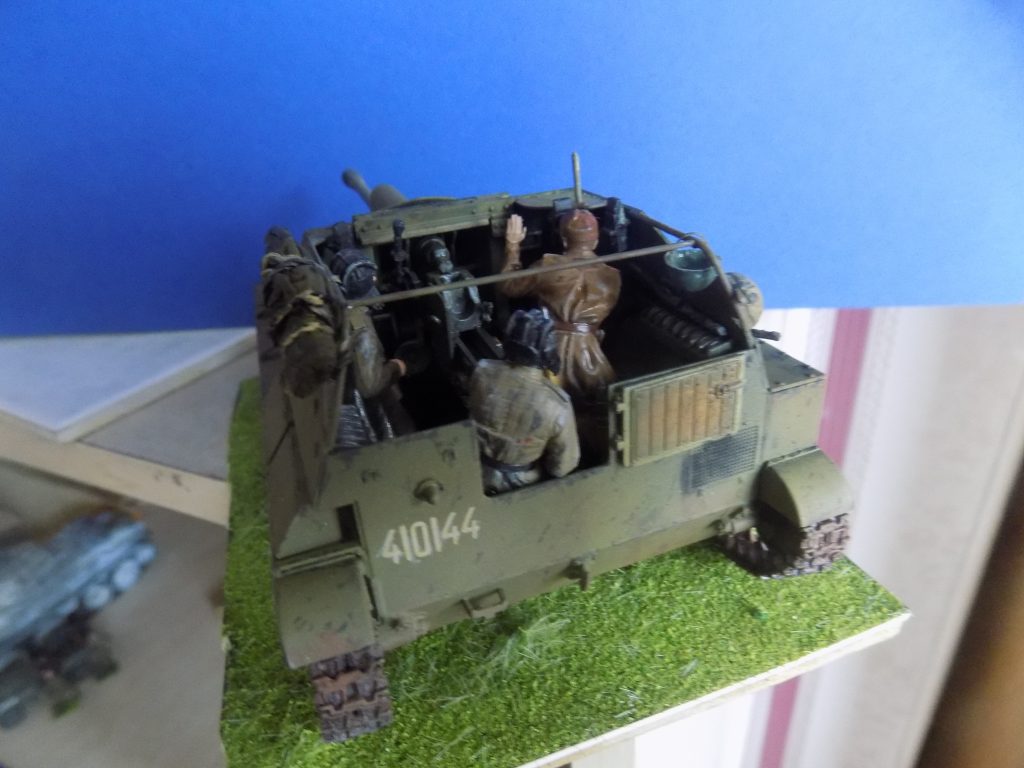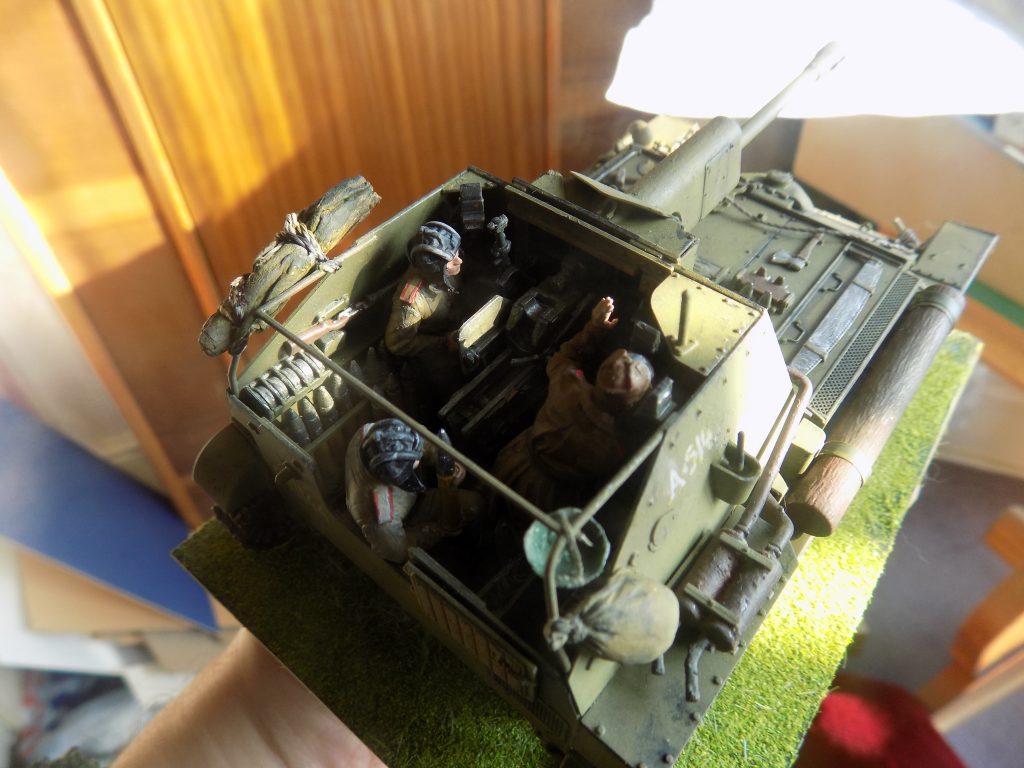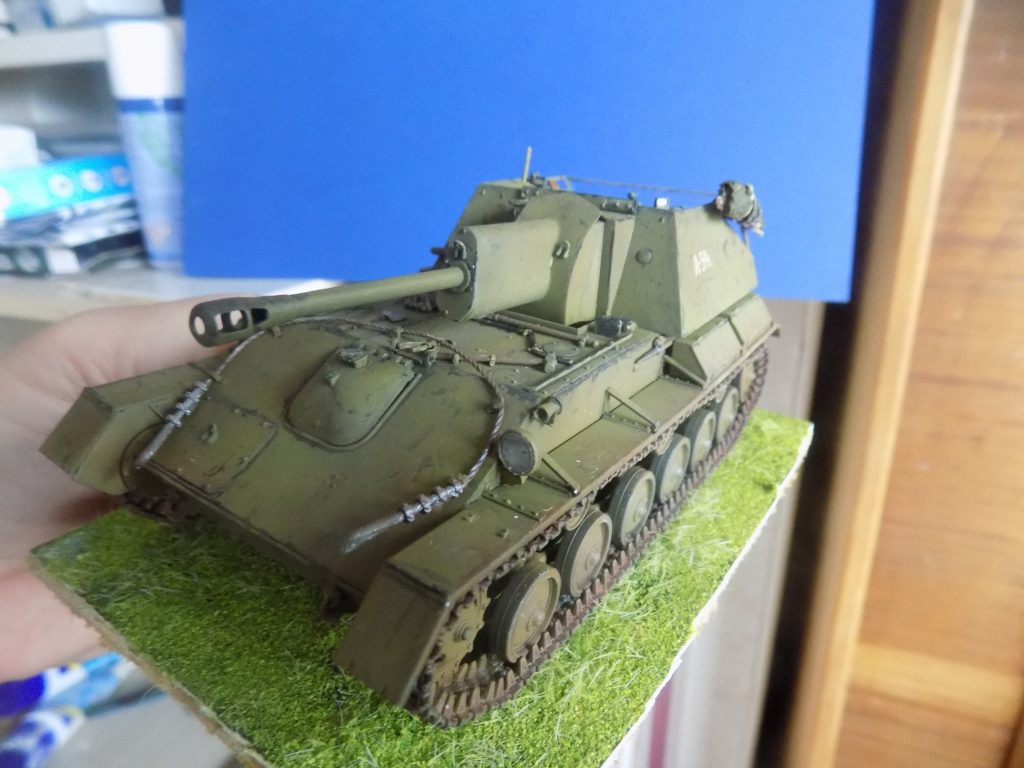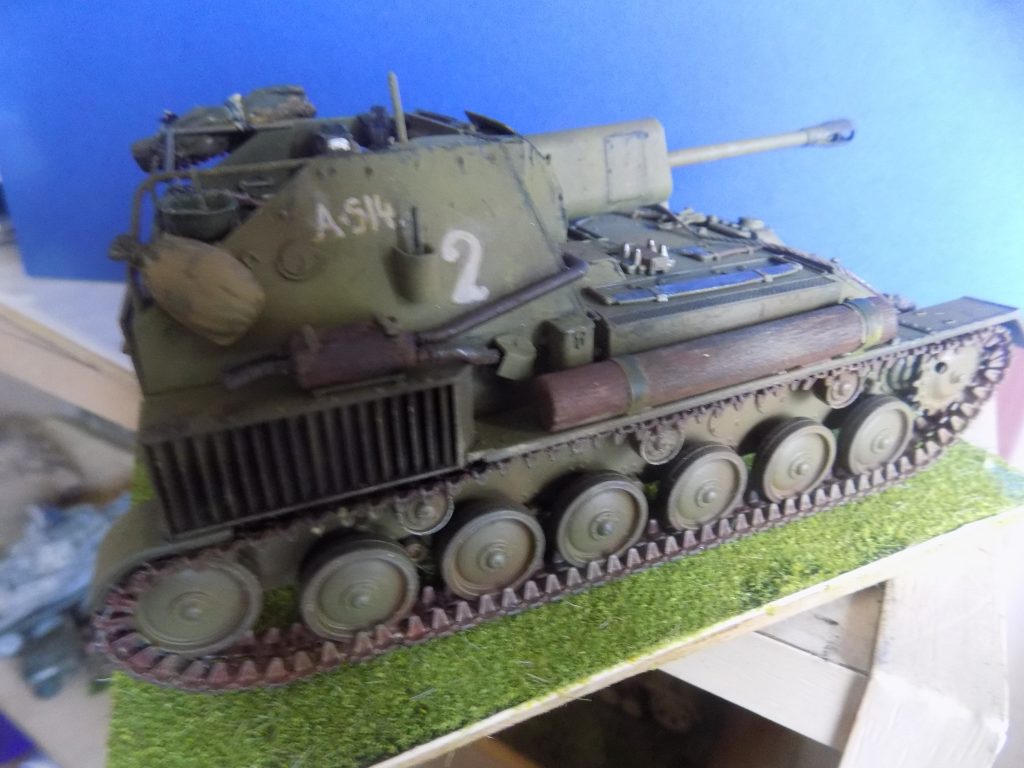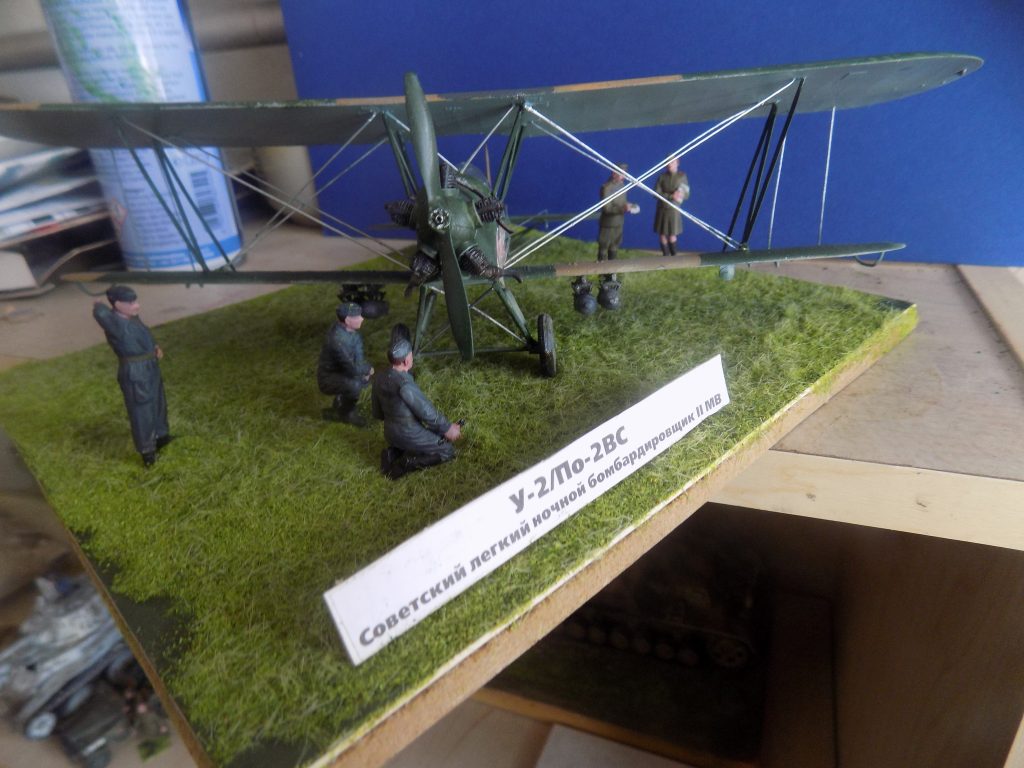
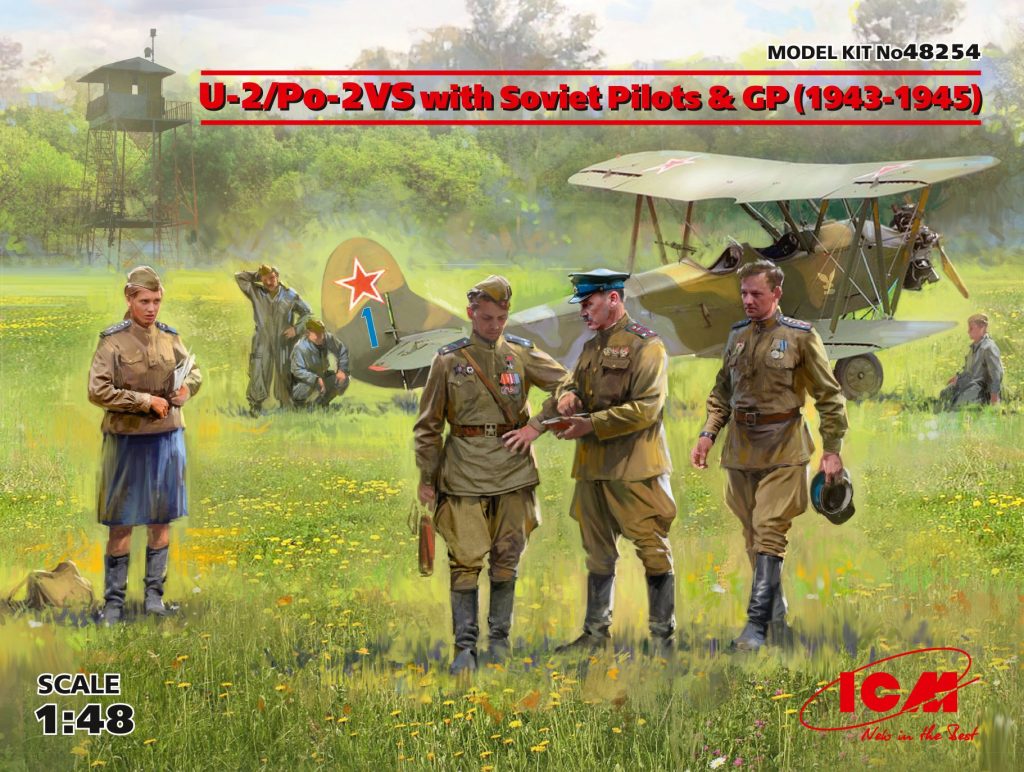
U-2 from the Russian uchebnyy (‘training’). This particular aircraft was one I have wanted to build for many years not least because my Father mentions seeing, or rather hearing, them fly over his native village in Ukraine during the Second World War.
I was drawn to this particular kit as it’s relatively cheap and comes with lovely box art as you can see! They say that building a model is 90% inspiration and the allure of the box art is very often the deciding factor. It is also by ICM a Ukrainian manufacturer in Kiev so rather appropriate.
I am not a great fan of building bi-planes generally as the rigging is such a pain to attach but by now I thought had sufficient skills and confidence to attempt it!
The rigging is mostly nylon thread and stretched sprue (i.e. made by stretching a part of plastic sprue or frame of the model parts over a lighted candle).
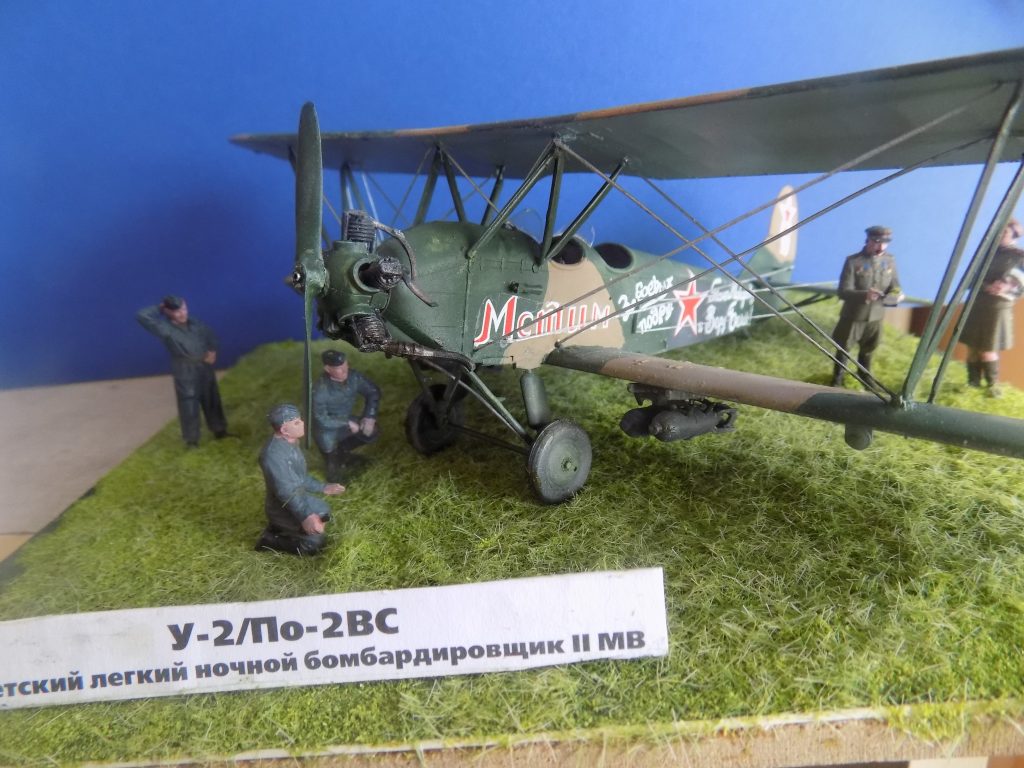
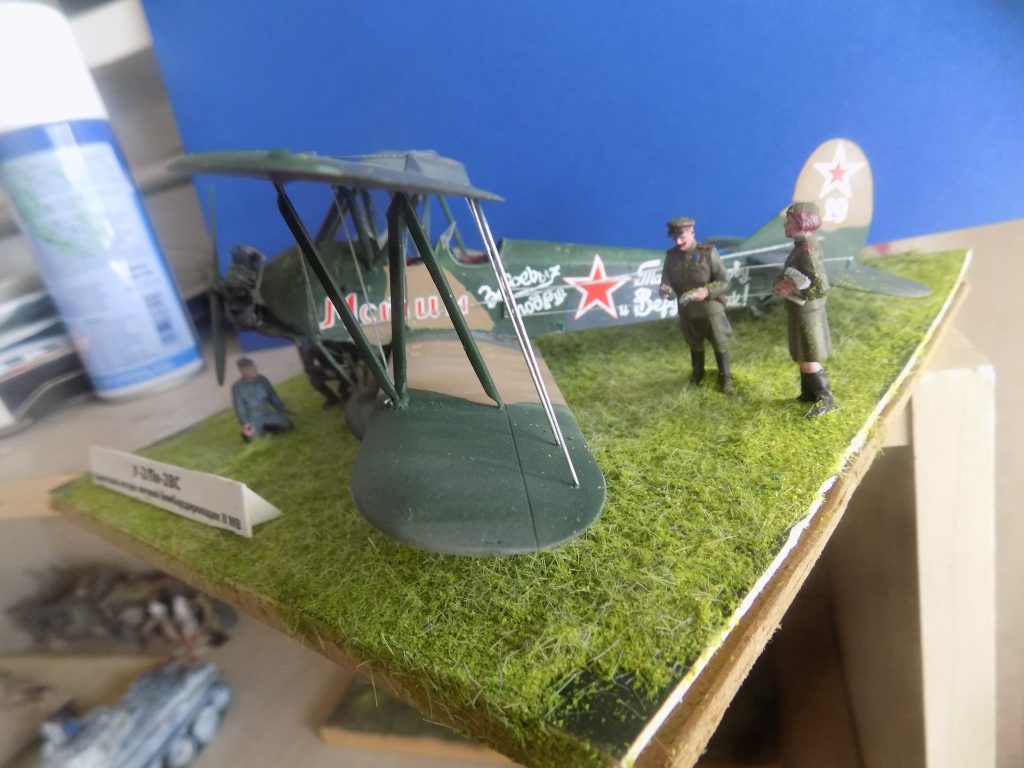
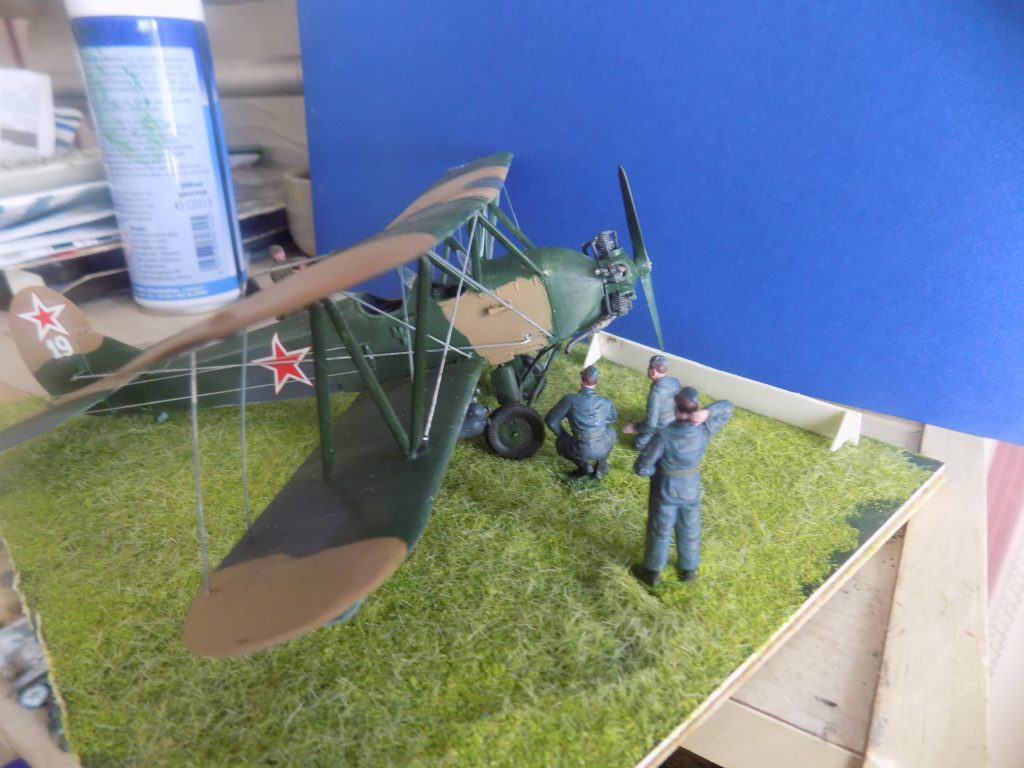
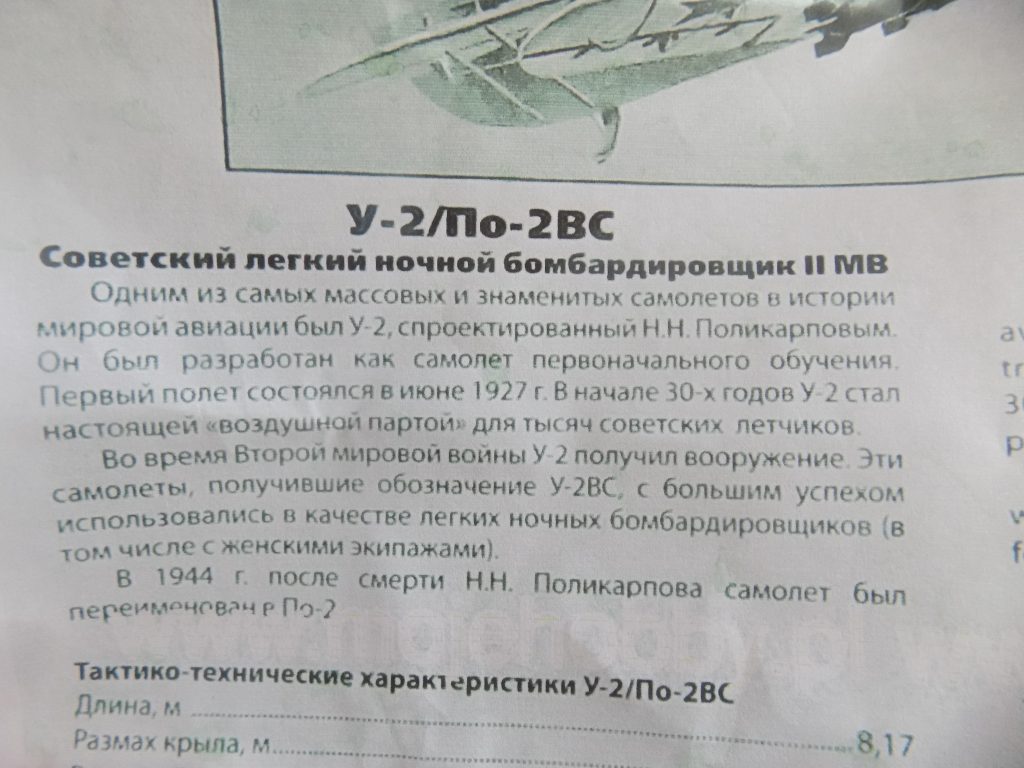
The writing on the fuselage side says in Russian, ‘We shall avenge’ and ‘for the fighting (female) friends’ and also the names of two of the Soviet female pilots ( Tanya Makarova and Vera Belik) who flew in the aircraft at the end of the war (both killed). I managed to mess up one of the decals which were incredibly thin and so had to rewrite them myself with a white marker pen!
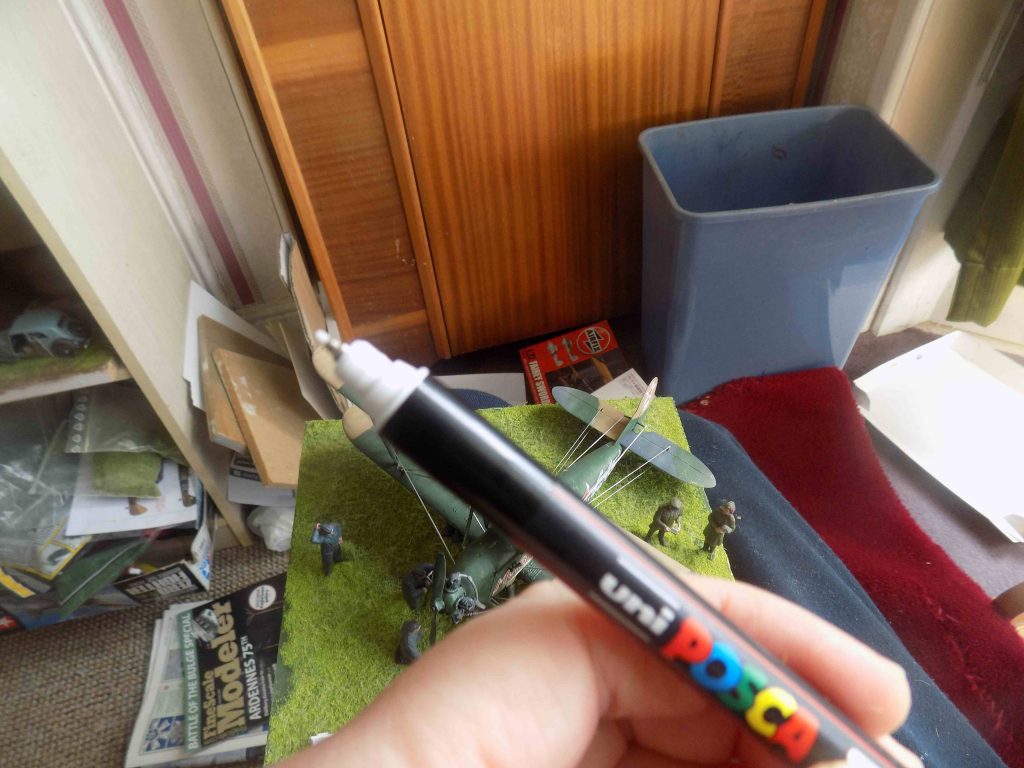
Here is what my Father said about the aircraft in the book ‘God Save Me From My Friends’ (3rd edition Vanguard press page 121:
‘From time to time, the Russians bombed our village. The aircraft came over only at night and we dubbed them ‘derkarchi’ due to the unique ‘drr’ sound of their engines, which the pilots would sometimes cut in order to glide and avoid being caught in the beams of the German searchlights. The ‘derkarchi’ were primitive wood and canvas bi-planes and they were little more than nuisances to the Germans‘. The footnote says: ‘Derkarchi‘. Probably the famous U-2/Po-2 bi-plane. Nicknamed by the Germans the ‘coffee grinder’ and the ‘sewing machine’, it often flew by night (painted all black) to drop mines or bombs. On page 120, it is mentioned that two divisions of U-2s were used by the Soviets to bomb the German held Ukrainian fortress town of Ternopil in western Ukraine into submission.
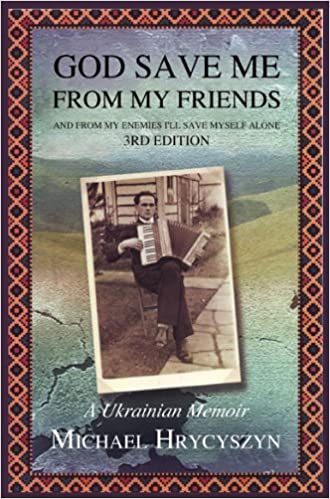
https://www.amazon.co.uk/Friends-Enemies-Myself-Alone-Vanguard/dp/184386892X/ref=sr_1_2?dchild=1&keywords=god+save+me+from+my+friends+hrycyszyn&qid=1591092670&sr=8-2
The PO-2 was the aircraft used by the 588th Night Bomber Regiment composed of an all-woman pilot and ground crew staff and as such they earned the nickname ‘Night Witches’.
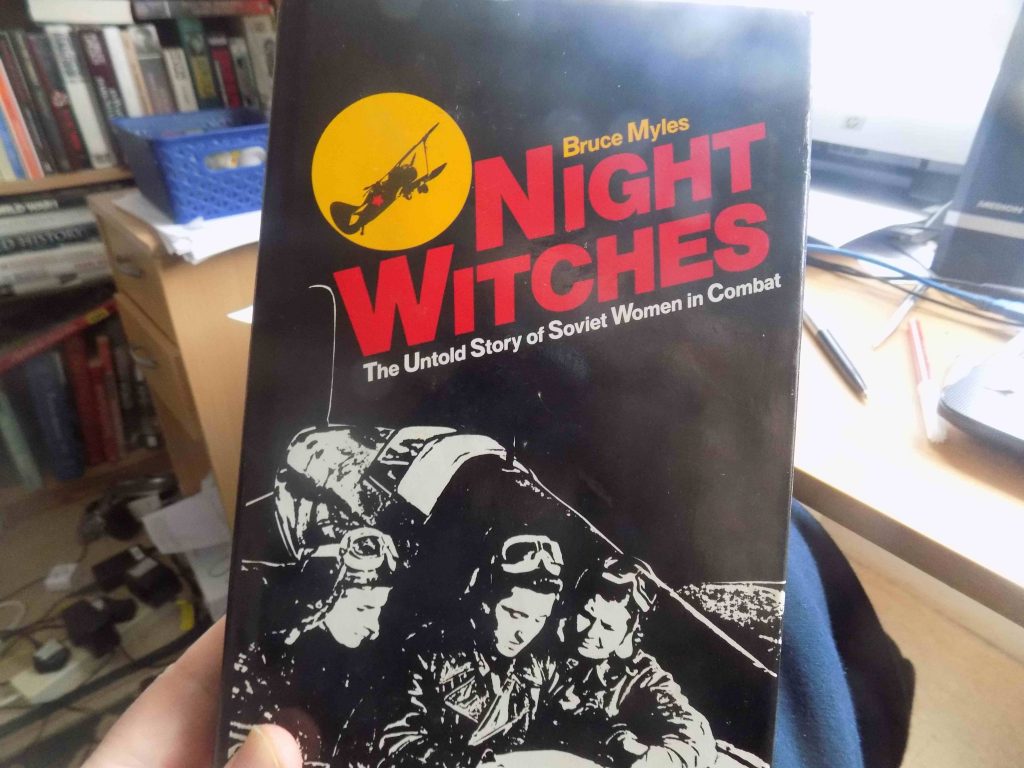
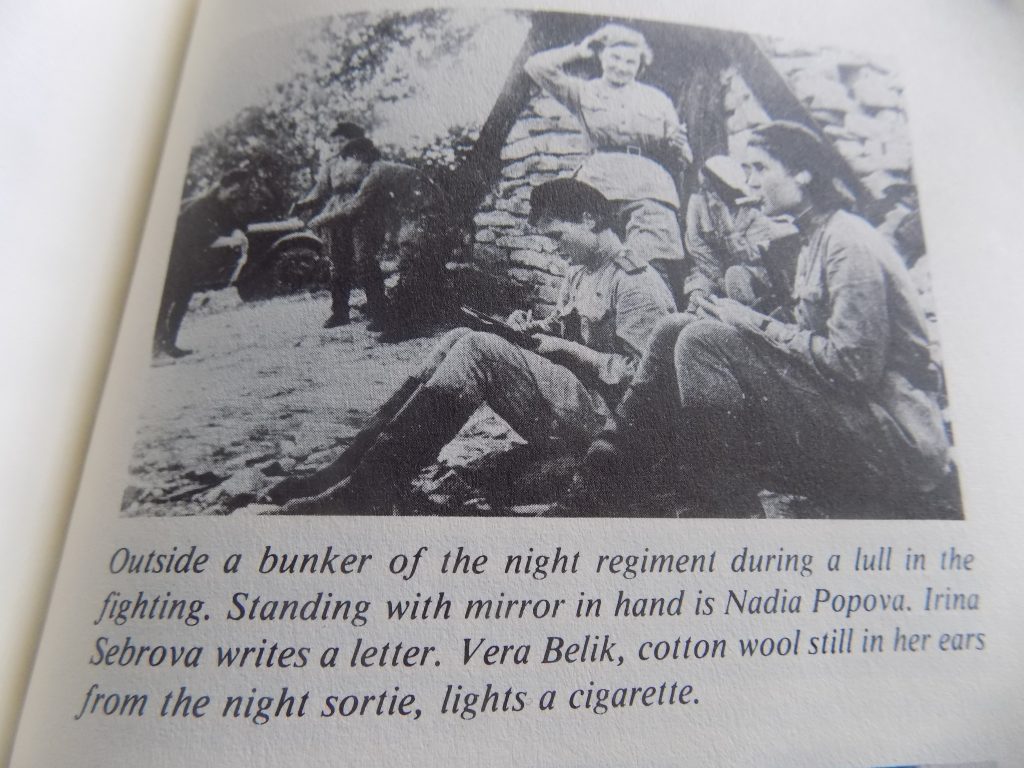
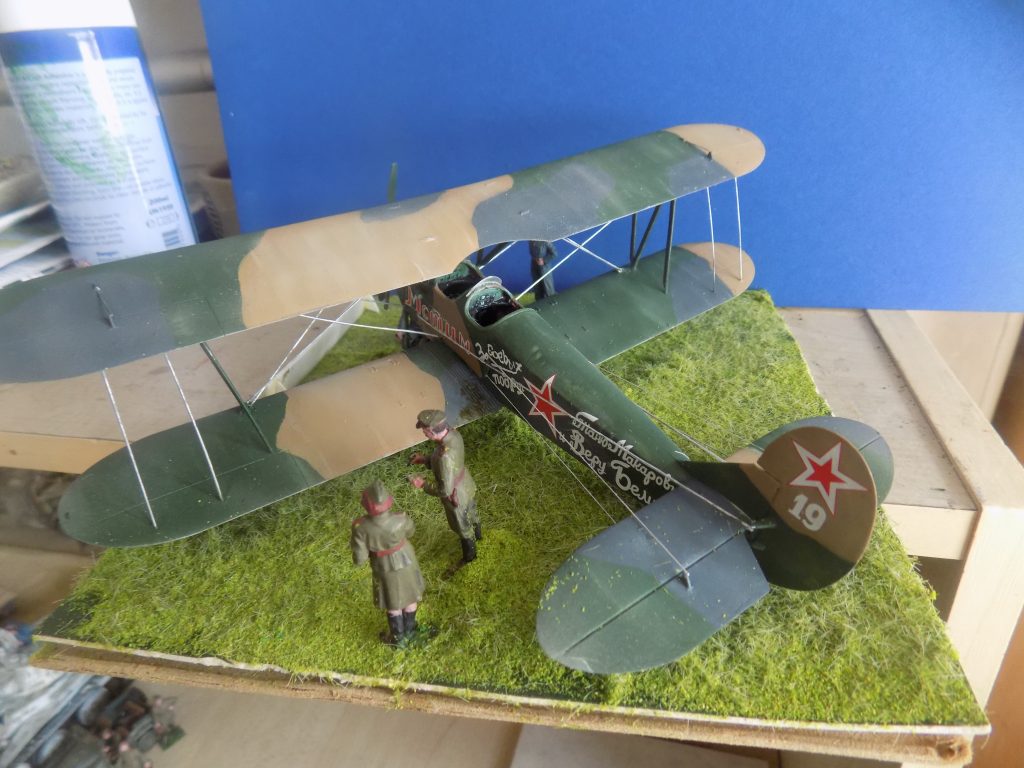
All in all, a very pleasing and interesting project!
